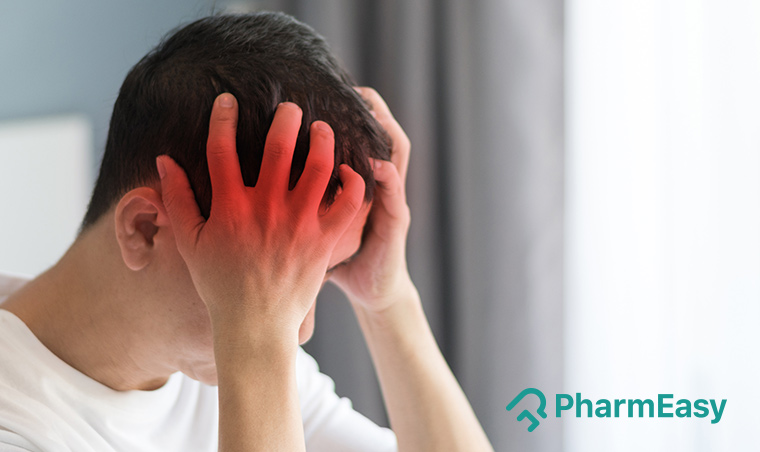Stroke: Symptoms And Treatments
By Dr. Nikita Toshi +2 more

Get,

to manage your symptom
Get your,


4 Cr+ families
benefitted

OTP sent to 9988776655



You’ve successfully subscribed to receive
doctor-approved tips on
Whatsapp

Get ready to feel your best.

Hi There,
Download the PharmEasy App now!!


Register to Avail the Offer
Send OTPBy continuing, you agree with our Privacy Policy and Terms and Conditions

Hi There,
Sign up on PharmEasy now!!
Trusted by 4 crore+ families

OTP sent to 9988776655



You have unlocked 25% off on medicines




Code: NU25
By Dr. Nikita Toshi +2 more
According to WHO, around 15 million people suffer a stroke annually. Of these 5 million die and a significant number of the remaining population suffer a disability for a lifetime due to stroke. This not only affects the individual but the entire family. Read further to understand how strokes are caused and if there is a way to prevent them.
Strokes are caused when one or more blood vessels present in the brain get ruptured and bleed or if they get clogged, blocking the flow of blood and oxygen to the brain. As a result of the lack of oxygen in the brain, the cells and tissues in the brain stop functioning and begin to die within seconds of the occurrence.

Strokes are a leading cause of death among middle-aged and older individuals and every year thousands of people are reported to have died because of it.
Table of Contents
Some individuals are potentially at a higher risk of suffering from a stroke than others. Several factors come into play when determining who is at greater risk like gender, ethnicity, age etc. Main cause in the majority of cases is high/uncontrolled blood pressure.
Men are supposedly at a higher risk of suffering from strokes than women while Hispanics and African Americans are more susceptible to strokes than people of other races. What are these factors? Let us find out about some of them so that they can be treated at the earliest.
The symptoms of a stroke may appear out of the blue or the body may be giving signs due in advance. Regardless of that, it is important to be aware of the symptoms of a stroke so that one can seek help when in need. While it is difficult to identify the internal signs that a body gives before suffering from a stroke, here are 9 external symptoms that can be easily assessed.
1. The acronym ‘FAST’
Here are some ways of caring for a person who is suffering from a stroke:
Always remember- every second counts and early intervention by a doctor can increase the chances of a positive outcome
The following are some ways you can care for a person who has suffered a stroke and needs rehabilitation:
Prevention is better than cure. Therefore, it is important to follow some tips to reduce the risk of occurrence of a stroke, especially among people who are more prone to it.
These measures are usually the basics of living a healthy lifestyle.
The health of the different organs of your body is to a large extent dependent on your lifestyle choices. So by being cautious, you can do your body a huge favour.
Disclaimer: The information provided here is for educational/awareness purposes only and is not intended to be a substitute for medical treatment by a healthcare professional and should not be relied upon to diagnose or treat any medical condition. The reader should consult a registered medical practitioner to determine the appropriateness of the information before consuming any medication. PharmEasy does not provide any guarantee or warranty (express or implied) regarding the accuracy, adequacy, completeness, legality, reliability, or usefulness of the information; and disclaims any liability arising thereof.
Links and product recommendations in the information provided here are advertisements of third-party products available on the website. PharmEasy does not make any representation of the accuracy or suitability of such products/services. Advertisements do not influence the editorial decisions or content. The information in this blog is subject to change without notice. The authors and administrators reserve the right to modify, add, or remove content without notification. It is your responsibility to review this disclaimer regularly for any changes.

Leave your comment...
Comments